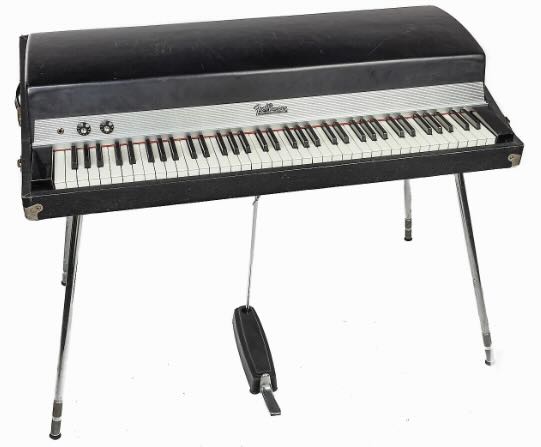If your course requires a keyboard instrument, it may be difficult to decide which type is the best fit for your needs, or if the instrument you already have will be sufficient. This article will go over a number of different types of keyboard instruments, and discuss functions and potential use cases of each. It's worth noting that the lines between some of these categories can be somewhat blurry, and any given instrument could potentially fall into more than one category.
Acoustic Pianos
The first instrument in the keyboard family that most people think of is probably an acoustic piano. While there may be some variance, these are almost always 88 keys. It would be a stretch to refer to a piano as truly portable, though it is obviously possible to move one. The action on pianos is usually superior to other keyboard instruments, though many do their best to replicate the feel of a piano. If using an acoustic piano for recording or music production, a microphone would be required, with a stereo miking setup generally producing the best results.
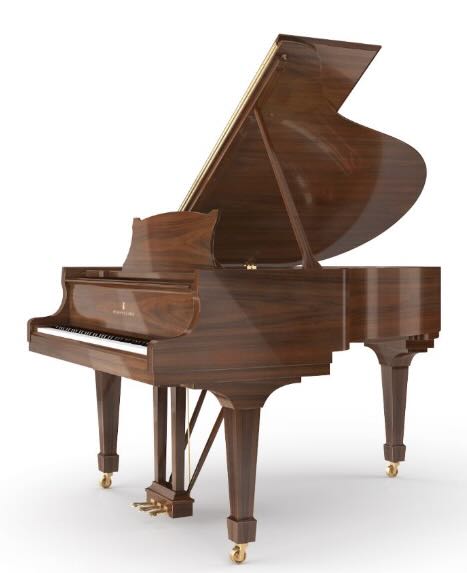
MIDI Keyboard Controllers
A MIDI keyboard controller is a piece of hardware that transmits MIDI data to MIDI enabled devices using a built-in piano style keyboard. MIDI keyboard controllers come in a variety of sizes, from 25 to 88 keys, and they can also often feature other types of controls that can transmit MIDI data, such as knobs, faders, buttons, pads, etc. Full size (88 key) models will usually feature weighted keys with a piano-style feel, but most models with less keys will have a synth-style action without any weighting.
MIDI controllers don't contain any on-board sounds and rely on being connected to a computer or synthesizer in order to produce sound, as the controllers do not generate sound themselves. If you are primarily producing music "in the box", a MIDI controller is an essential tool, not only for note entry, but for manipulating parameters within your DAW. They can also be utilized as a live performance tool, as they can be used for playing notes, manipulating sounds, triggering backing tracks, etc., and are very portable, as they are usually lighter than other similarly sized instruments. MIDI controllers also don't usually need external power if connected to a computer, though there are exceptions.
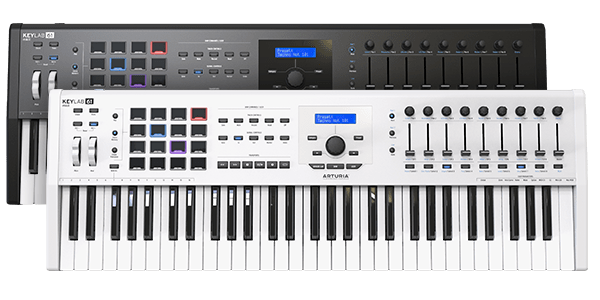
It's worth noting that while some of the other options below may be used to input MIDI information, MIDI controllers are designed specifically with MIDI functionality in mind, and are generally better suited for the task if doing anything beyond basic note entry. For more information on MIDI controllers, including the Berklee Online Support Team's picks, see this article.
Digital Pianos
Digital Pianos are keyboards that try to replicate the sound and feel of an acoustic piano as accurately as possible. They almost always have 88 weighted keys, and sometimes more than one piano sound to choose from. It is not uncommon for digital pianos to also have a few other options for sounds beyond just piano, such as an electric piano, clavichord, organ, etc.
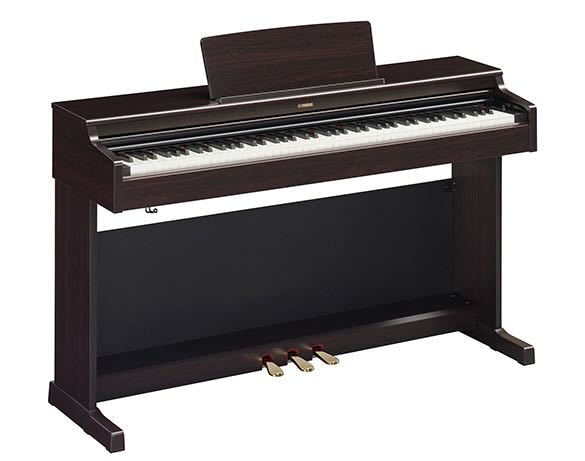
They are not designed with portability and live performance in mind, as the keyboard is often connected to the stand with screws, but it is still a viable option to use them for performance in the right setting. Digital pianos will usually have a quarter inch output (or two, for stereo) that allows you to connect the instrument to an amplifier, mixer, or audio interface. They also frequently have some MIDI capabilities, though not to the degree of a MIDI keyboard controller.
Keyboard Workstations
Keyboard workstations are electronic instruments that usually feature a wide variety of sounds, as well as onboard recording functionality. Some will have a piano-style feel or action, with others having action more like a synth. Workstations usually have at least 61 keys, with 88 being the most common. If users are not taking advantage of the onboard recording features, and instead using a DAW, keyboard workstations are likely not the best option in terms of value. Like digital pianos, they frequently have some MIDI capabilities, though not to the degree of a MIDI keyboard controller. Keyboard workstations also will almost always have have a quarter inch output (or two, for stereo) that allows you to connect the instrument to an amplifier, mixer, or audio interface. They may also have a way to download recorded songs to a computer, usually though a USB connection.
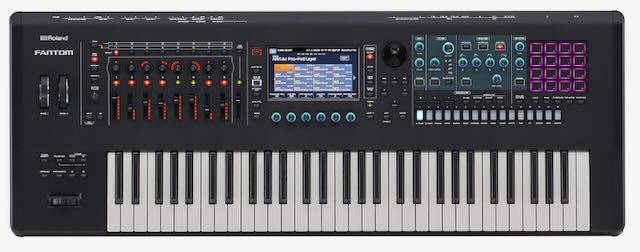
Electronic Keyboards
Electronic keyboards are generally lower priced, non-professional keyboard instruments that feature synth-style action. They are usually very portable and are found in sizes from 61–88 keys. Electronic keyboards will often include many sounds, including things like horns, strings, guitars, drums, etc, though the sounds usually are not of the same quality as those found in digital pianos, workstations, and other options listed in this article. They can also feature an on-board recording setup, though not to the degree of a keyboard workstation. Similar to digital pianos and workstations, they also frequently have some MIDI capabilities, though not to the degree of a MIDI keyboard controller.
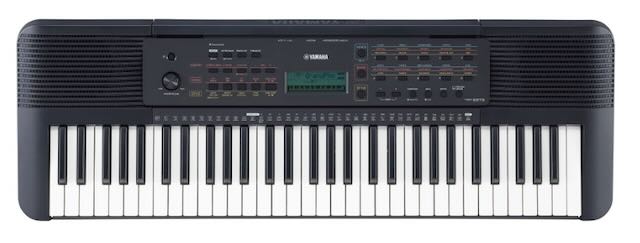
Stage Pianos/Keyboards
Stage Pianos or Keyboards are designed for live performance use, and are designed with both portability and a professional look in mind. One thing that sets stage pianos/keyboards apart from dedicated MIDI controllers or other electronic keyboards is that you often have physical controllers, such as knobs and faders, which can manipulate on-board parameters of high-quality sounds, such as drawbars and filters. Typically, stage pianos feature piano, organ, electric piano, clavichord, and sometimes synth sounds. These can sometimes have more advanced MIDI control than some of the other non-MIDI controller options listed here, but still typically don't measure up to MIDI controllers when comparing strictly MIDI functionality. Like some of the other options in this article, they can be found in sizes from 61–88 keys, with 73 or 88 being the most common, and also feature two ¼ inch connections for outputting stereo audio to an amplifier, mixer, or audio interface.

Synthesizers
A synthesizer can be defined simply as an electronic instrument that generates audio signals. Therefore, many of the examples listed above could technically be considered a synth, though there are some features typically associated with synths that are unique compared to the other instrument types listed above. Synths also don't always have keyboards, but for the purposes of this article we'll be discussing those that do, which typically have smaller keyboards than other keyboard instruments. It's common to see synths with 25 or 37 keys, though you'll also find examples with more.
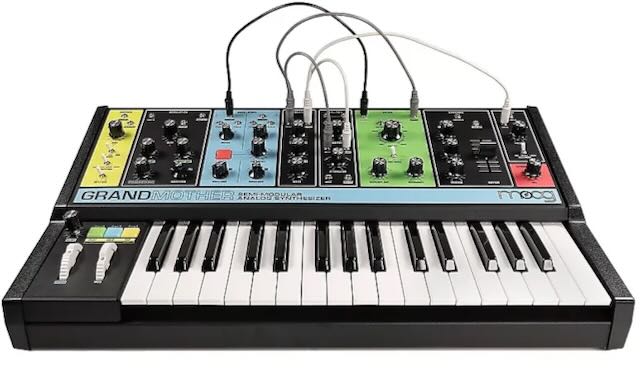
Synths can be analog or digital, and will usually have anywhere from 1–4 sound generating oscillators. Users typically can control the attack, sustain, decay, and release (referred to as ADSR) of the oscillator(s), as well as any filters. This provides the user with much more fine control of the qualities and timbre of the sound. Synths feature ¼ inch audio outputs, and sometimes have connections for one or both of MIDI input and output. It's worth noting that even those with MIDI connections still typically don't measure up to MIDI controllers when comparing strictly MIDI functionality.
Other Analog Keyboard Instruments
No article about different types of keyboard instruments would be complete without mentioning a few other types of analog keyboard instruments such as electric organs, electric pianos, and electric clavichords. Notable specific examples include the Fender Rhodes and Wurlitzer 200A electric pianos, the Hohner D6 Clavinet, and the Hammond B3 organ. These can feature ¼ inch outputs, though not always. These types of instruments are far less common as technology has evolved, but are often still sought after for their unique sounds and can be very expensive due to scarcity.
